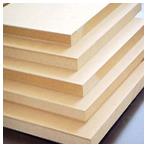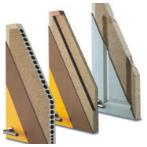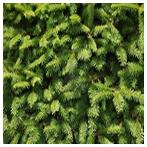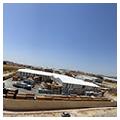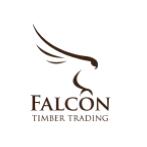

Common Name(s): Northern White Cedar, Eastern Arborvitae
Scientific Name: Thuja Occidentalis
Distribution: Northeastern North America
Average Dried Weight: 350 kg/ m3
Color: Pale brown or tan.
Grain: Straight even grain.
Texture/Pores: Fine texture and closed pores.
Durability: Rated as ‘Durable to Very Durable’ regarding decay resistance; Resistant to
termites and powder post beetles.
Workability: Good overall working characteristics, works easily with both hand and
machine tools. Can be soft and thus fragile, giving it poor screw-holding capabilities.
Northern White Cedar glues and finishes well.
Scent: Has a distinct, spicy, cedar-like scent when being worked.
Common Uses: Fences, posts, shingles, piles, outdoor furniture, railroad ties and
pulpwood. Due to flexibility can also be used in marine ply.
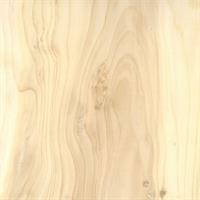
Common Name(s): Douglas-Fir
Scientific Name: Pseudotsuga enziesii
Distribution: Western North America
Average Dried Weight: 570 kg/ m3
Color: Light brown in color with a hint of red and /or yellow, with darker growth rings.
Can vary in color based upon age and location of tree.
Grain: The grain is typically straight and plain, and can sometimes be presented with a
decorative curl or wave.
Texture/ Pores: Fine texture.
Durability: Moderately durable with regard to decay, but can be subject to insect
attack, depending on location.
Workability: Typically machines well, but has a moderate blunting effect on cutters.
Accepts stains, glues, and finishes well.
Scent: Has a distinct, resinous scent when being worked.
Common uses: Veneer, plywood, and structural or construction lumber.
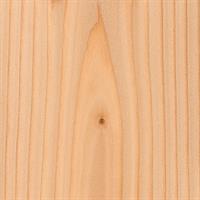
Common Name(s): Scots Pine
Scientific Name: Pinus Sylvestris
Distribution: Europe and Northern Asia
Average Dried Weight: 550kg/ m3
Color: Light reddish brown
Grain: Grain is straight
Texture/ Pores: Medium even texture.
Durability: Moderately durable to non-durable regarding decay resistance.
Workability: Scots Pine is easy to work with both hand and machine tools. Glues and
finishes well.
Scent: Scots Pine has a mild, resinous Scent when being worked.
Common Uses: Utility poles, posts, boxes/crates, flooring, pulpwood, and construction
lumber.

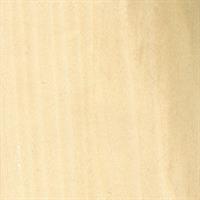
Common Name(s): Poplar, Tulip Poplar, Yellow Poplar
Scientific Name: Liriodendron Tulipifera
Distribution: Eastern United States
Average Dried Weight: 515 kg/m3
Color: Light cream to yellowish brown, with occasional streaks of gray or green.
Grain: Straight uniform grain.
Texture/ Pores: Medium texture and closed pores.
Durability: Moderately durable to non-durable in regards to decay resistance.
Workability: Very easy to work in almost all regards. Be aware that this may be quite
soft. Due to its low density, Poplar can sometimes leave fuzzy surfaces and edges:
especially during shaping or sanding. Sanding to finer grits of sandpaper may be
necessary to obtain a smooth surface.
Scent: No scent.
Common Uses: Pallets, crates, upholstered furniture frames, pulpwood, and plywood.
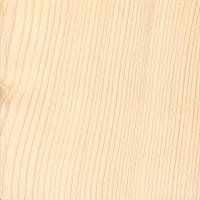
Common Name(s): White Fir
Scientific Name: Abeis Concolor
Distribution: Mountainous regions of Western United States.
Average Dried Weight: 415kg/m3
Color: White to reddish brown.
Grain: Has a straight grain.
Texture/Pores: Has a uniform, medium-coarse texture.
Durability: Non-durable regarding decay resistance, and has little resistance to insect
attack.
Workability: Can be easily worked by hand and machine tools, though some drying
defects may be present or occur while drying the wood. Glues, stains, and finishes well.
Scent: No scent
Common Uses: Construction lumber, paper (pulpwood), plywood, and other utility wood
purposes. It is commonly grouped together with other species of fir.
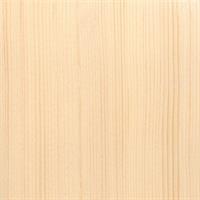
Common Name(s): White Spruce
Scientific Name: Picea Glauca
Distribution: Northern North America
Average Dried Weight: 430 kg/ m3
Color: Creamy white, with a hint of yellow.
Grain: Consistently straight grain.
Texture/Pores: Fine even texture.
Durability: Slightly Resistant to Non-Resistant to decay.
Workability: Easy to work, as long as there are no knots present. Glues and finishes
well, though it can give poor results when being stained due to its closed pore structure.
A sanding sealer, gel stain, or toner is recommended when coloring Spruce.
Scent: No Scent.
Common Uses: Pulpwood, papermaking, construction, lumber, millwork, and crates.
Products - Softwoods

